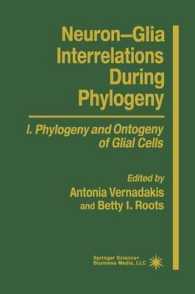- ホーム
- > 洋書
- > 英文書
- > Science / Mathematics
Full Description
This is a multi-authored book with a focus on the role of olfaction (the sense of smell) in the multitude of interactions between arthropods and their blood hosts.
Blood-feeding arthropods (mostly insects, ticks and mites) depend on a vertebrate host for survival and reproduction. Their evolutionary success depends on how efficiently they can detect the presence of a host and actively locate it to obtain a blood meal. This is the domain of olfaction, which is perhaps the most important mode of signal exchange between hosts and blood-feeding arthropods that visit them. Important human and animal diseases like malaria, dengue, West Nile virus, bluetongue and trypanosomiasis are transmitted between humans and/or animals as a direct outcome of olfactory responses mediated by host odours. Increased understanding of olfaction and how this governs interactions between arthropods and blood hosts will enable the development of novel strategies to disrupt this behaviour. For example, many species of tsetse fly respond over distance to simple blends of synthetic odours. Combined with traps or insecticide-treated targets, such odour-baited devices can effectively suppress fly populations and thus transmission of sleeping sickness. Such systems still need to be developed for disease-vectoring mosquitoes, flies and ticks, necessitating further knowledge on the chemical basis of interactions with their vertebrate hosts.
In 18 peer-reviewed chapters, recognized experts provide a state-of-the-art overview of olfaction in vector-host interactions, from the molecular to population biology level. A wide range of arthropods is discussed, including mosquitoes, black flies, sand flies, tsetse flies, blood-feeding bugs and ticks. Novel ideas, definition of research gaps, and a collection of the most recent studies will be of value to biology students, chemical ecologists, as well as those implementing vector control programmes.








